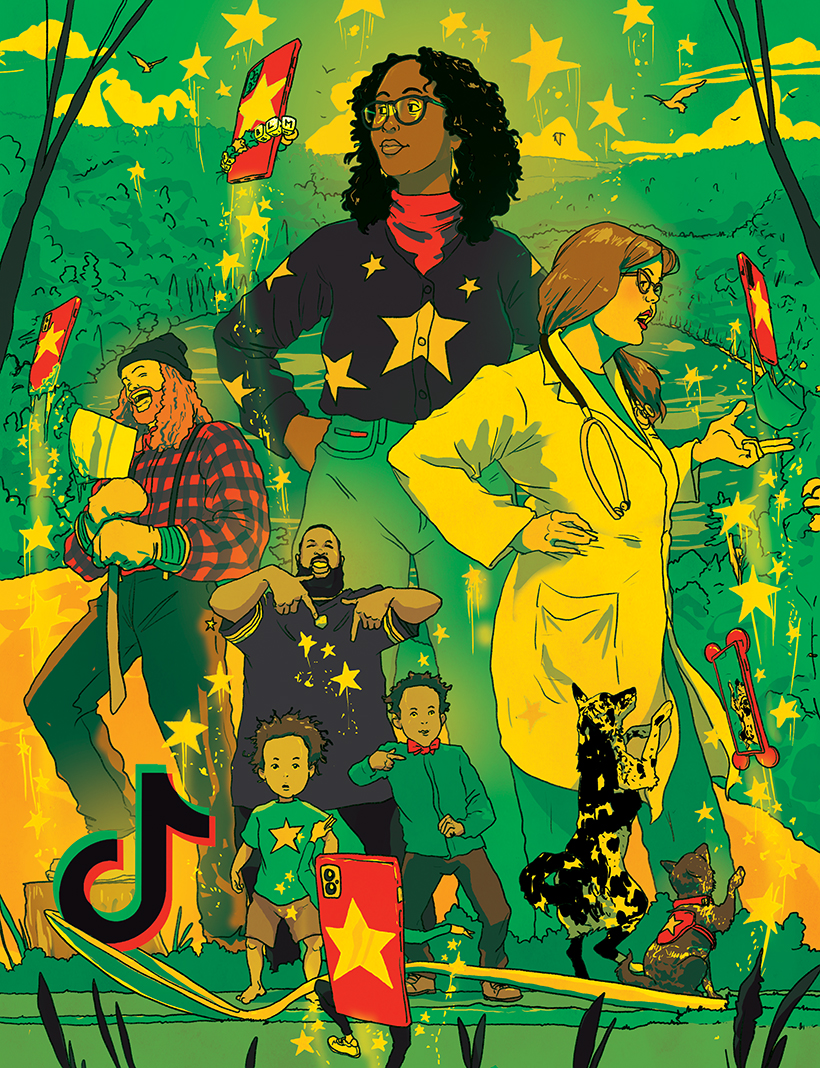Sometimes all it takes is 15 seconds.
The day before Thanksgiving 2020, Michael Tovar and his young sons danced in their living room to a snippet of Perry Como & the Fontane Sisters’ “It’s Beginning to Look a Lot Like Christmas.” In it, 2-year-old Silen—standing, but a little wobbly—manages to mimic his dad, Michael, and 4-year-old brother Stiles. This undeniable bright spot in the pandemic holiday season soon went viral.
Now nearly 10 million views later, the Tovar family of Austin, Minnesota, are legends on the social media app TikTok. It’s clear the video’s extreme cute factor goes beyond language or culture, with people commenting in French (“super mignons,” or “super cute”), Spanish (“El bebé es todo lo que está bien en el mundo,” or “The baby is all that is right in the world”) and Japanese (“微笑ましいんだけど,” or “I’m smiling”).
Our mobile device obsessions, shortened attention spans, and a hunger to create, especially during the pandemic, have all fed into a TikTok boom. The app, which has quickly become a dominant platform, allows users to post videos under a minute of anything they please. Maybe you’re familiar with the app as a platform for teens to create elaborate dance routines—and there’s plenty of that—but peek beneath the surface and you’ll find more, a lot more.
This feature appeared in the Jan/Feb issue of Minnesota Monthly magazine. Read the entire article here.
